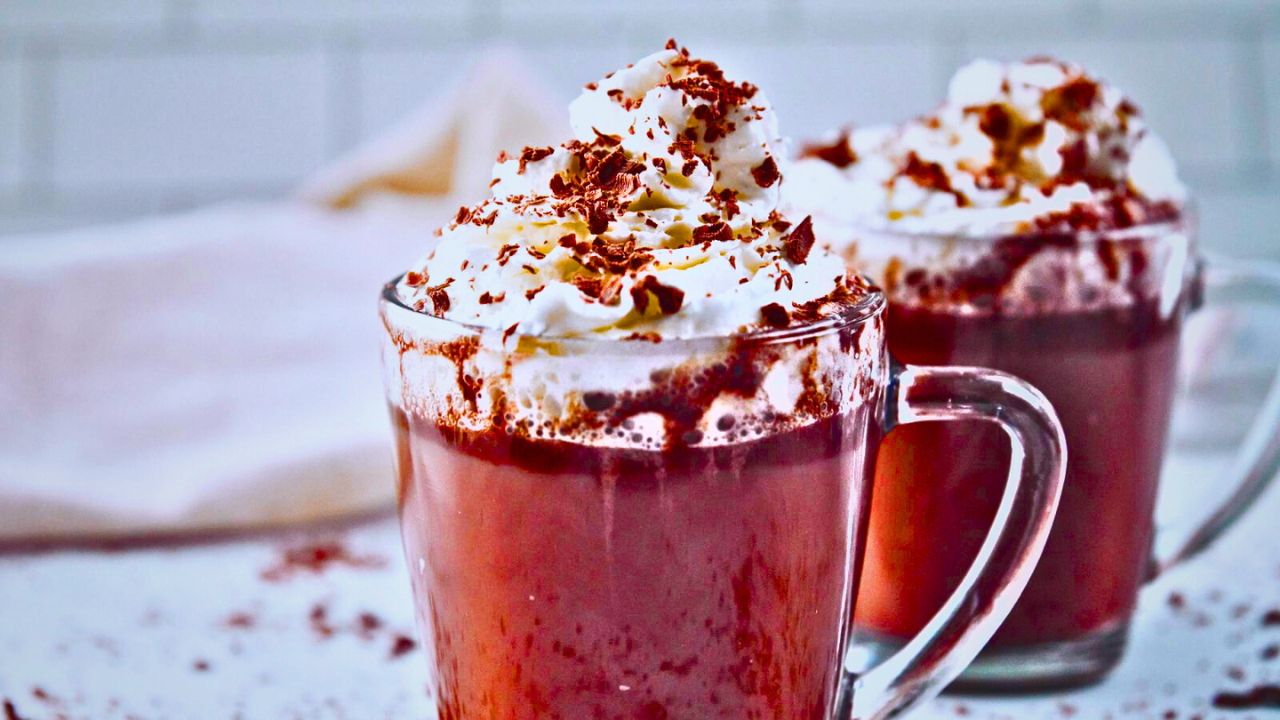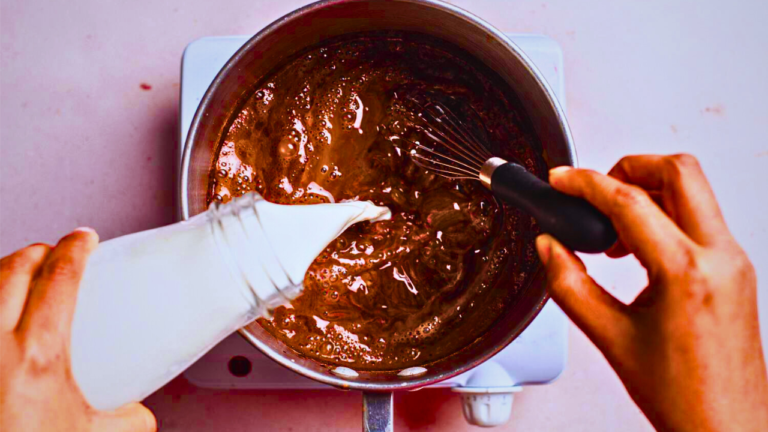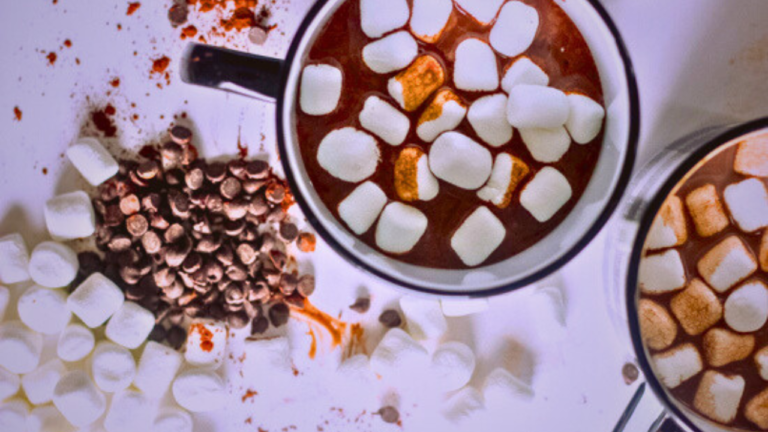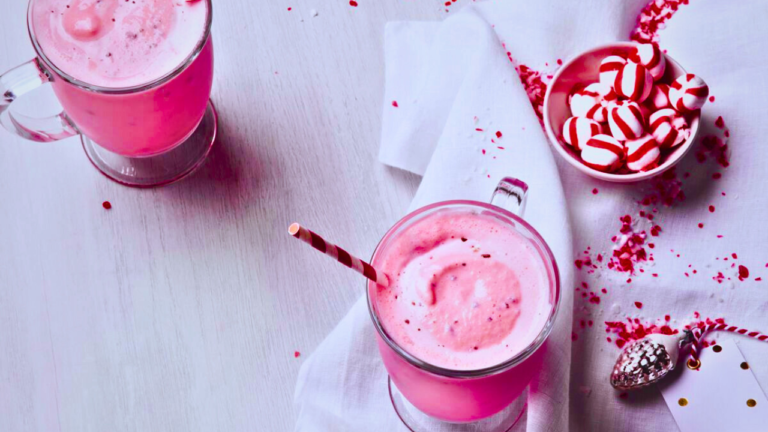What’s The Difference Between Hot Chocolate And Chocolate Milk?
Whether it’s a chilly winter day or a hot summer afternoon, the divine taste of a chocolate drink can be quite irresistible, but does one choose hot chocolate or chocolate milk? Though these delicious beverages may seem quite similar at first glance, there are notable differences between them that can alter your overall gastronomic experience. Let’s dive deep into the fascinating world of these rich, silky, and decadently chocolatey drinks.
“After all, as the adage goes, knowledge shared is knowledge multiplied. By understanding the key distinctions between hot chocolate and chocolate milk, not only will your gastronomic experience be enriched, but you’ll also become the go-to authority among your circle for chocolate drinks.”
Through this article, we’ll be exploring the following topics:
- The main ingredients in hot chocolate and chocolate milk
- The processes behind the preparation of these time-honored drinks
- Key differences in taste between hot chocolate and chocolate milk
To make the most of this article, remember that the goal isn’t just to figure out which drink you might prefer. It’s about appreciating the rich history, methodical preparation, and unique flavor profiles of these two beloved beverages, thereby enhancing your overall ‘chocolatier’ journey.
What is the main ingredient in hot chocolate?
The star of the show in hot chocolate is undoubtedly cocoa powder. Luxurious, rich, and aromatic, it forms the base for this classic wintertime beverage. Generally, hot chocolate recipes call for unsweetened cocoa powder, allowing the drink’s sweetness to be adjusted according to individual preference.
- Cocoa powder, despite its unassuming nature, transports the taste of hot chocolate to new heights by offering a complex depth of flavor with its distinctly chocolatey and slightly bitter profile.
- Coupling this with hot water or milk, sugar, and optional add-ons like marshmallows, whipped cream, or a dash of cinnamon or chili elevates the entire sensory experience.
Fun fact: Did you know? Cocoa powder is derived from the cocoa bean, which, like coffee beans, undergoes a lengthy process from harvesting, fermentation, drying, roasting, cracking, and winnowing all the way to grinding to the well-loved powdered form we recognize.
It’s the generous scoop of Dutch-processed or natural unsweetened cocoa powder in your cup that makes all the difference, transporting you into a world of decadent chocolate goodness.
What is the main ingredient in chocolate milk?
If we’re talking about chocolate milk, the main ingredient is in the name itself: milk. Chocolate milk is primarily made up of milk combined with cocoa and sweeteners. The type of milk used can vary, with full-fat, reduced-fat, low-fat, and non-fat milk all possible candidates. Cocoa and sweeteners give chocolate milk its signature taste and sweetness, balancing out the natural flavors of the milk.
But that’s not all. Often, chocolate milk also contains other ingredients to improve its texture and taste. Let’s take a closer look:
- Cocoa: The cocoa used in chocolate milk is usually processed (dutched), which gives it a smooth, mild flavor and a darker color. It’s what gives chocolate milk its rich, chocolatey taste.
- Sweeteners: Various sweeteners are added to balance the bitter taste of cocoa. This could be sugar, corn syrup, or even natural sweeteners like honey or stevia.
- Stabilizers: Like many other dairy products, stabilizers may be added to keep the cocoa in suspension and maintain a consistent texture throughout. Without them, the cocoa and milk may separate.
- Vitamins and Minerals: Lastly, chocolate milk often has additional vitamins and minerals added to enhance its nutritional profile. This can include vitamins D and A and other essential nutrients.
So, while milk is certainly the backbone of chocolate milk, it’s these additional ingredients that make it the sweet, creamy beverage we love.
How is hot chocolate prepared?
Hot chocolate preparation involves a delicate balance of ingredients and technique. It all begins with your desired type of chocolate. This can be a rich, dark chocolate for a more potent flavor or a lighter milk chocolate for a creamier taste. You can even experiment with white chocolate if you have a penchant for the sweet and subtle.
Now, how are the magic and cacoa combined in your cup?
- Heating the Milk: Firstly, you’ll want to heat some milk over low-medium heat. Be sure to keep a close eye on it because we don’t want it to boil over. The goal is to get it steamy and hot!
- Melt the Chocolate: Meanwhile, take your chocolate of choice and melt it down. This can be achieved by using a microwave or the double boiler method. If microwaving, warm it in 15-second bursts, stirring after each until it’s smooth.
- Mix it Up: Once your chocolate is liquified and your milk is steamy, it’s time to unite these two. Pour the melted chocolate into the hot milk while stirring or whisking. Continue to stir until you achieve a silky, liquid chocolate that’s steaming hot.
- Add Finishing Touches: If you like, add a bit of sweetener to ensure the flavor meets your preference. You may also want to add a pinch of salt to draw out the chocolate’s natural depth and a dash of vanilla to give it an aromatic lift.
And there you have it—a decadent mug of hot chocolate ready to transport you to flavorful bliss. While the process might seem elaborate, the result is worth every effort. Plus, it’s an excellent way to get creative and customize your own ideal hot chocolate!
How is chocolate milk prepared?
Ever wondered how chocolate milk gets that irresistible creamy, chocolaty flavor? Let’s unlock that sweet secret together.
Chocolate milk, much like its hot variation, begins with a combination of chocolate, or chocolate syrup, and milk. This base, however, is served chilled rather than hot, and the methods of mixing can vary. Here’s a general step-by-step guide to preparing homemade chocolate milk:
- Pour a cup of milk into a jar or a bottle with a secure lid.
- Add two tablespoons of unsweetened cocoa powder and two tablespoons of sugar.
- Secure the lid tightly, and then shake diligently until all the powders are completely dissolved and the liquid has taken on a chocolatey hue.
- Alternatively, you can mix the ingredients in a blender, but make sure you do this cautiously, as the mixture can quickly overflow or spill.
- Pour into a glass and enjoy a refreshing drink of DIY chocolate milk!
Note: Keep in mind that the type of chocolate used can greatly affect the flavor of the finished drink. Feel free to experiment with various brands of cocoa to find your personal favorite.
In the commercial production of chocolate milk, the process is quite similar but uses industrial machinery for blending and chilling. Furthermore, it often includes additional ingredients such as stabilizers and emulsifiers for texture and sweeteners for taste.
Ultimately, the aspect that separates chocolate milk from its warm counterpart is the temperature at which it is served. It’s the combination of the cold milk and chocolate that provides the refreshing, dessert-like sensation people commonly associate with chocolate milk.
What are the key differences in taste between hot chocolate and chocolate milk?
As you revel in your love for chocolate beverages, you’ve likely indulged in both hot chocolate and chocolate milk at different times. But beyond the temperature difference, have you ever paused to wonder about the distinct taste deviations between these two drinks? Let’s reveal the curtain and decode the hidden mystery of their flavors.
The very first thing that probably catches your tongue when you take a sip is the sweetness level. Hot chocolate tends to be less sweet than chocolate milk because it’s often made with semi-sweet or dark chocolate, giving it a rich, complex flavor compared to the generally sweeter milk chocolate often used in chocolate milk. However, sweetness levels can vary depending on the brand, preparation style, and personal preference.
| Hot Chocolate | Chocolate Milk |
|---|---|
| Less Sweet | Sweeter |
| Strong, Rich Flavour | Milky, Mild Chocolate flavor |
In terms of mouthfeel, hot chocolate is typically thicker and creamier due to being made with milk or cream, and sometimes a little bit of cornstarch is added as a thickener. On the other side, chocolate milk, though it is also made with milk, has a thinner and more fluid consistency because it is typically diluted with more milk or water and contains no thickening agents.
Lastly, you’d be surprised by the influence temperature can have on taste perception. As the name suggests, hot chocolate is served hot, which helps to amplify the lusciousness and depth of the chocolate while also cradling you in a warm, comforting hug of flavor. Meanwhile, chocolate milk is typically served cold, presenting a more refreshing yet still chocolaty experience. It’s almost like choosing between a warm, cozy winter night by the fireplace or a playful summer day at the beach.
Note: While we’ve detailed the usual differences in taste and texture, remember that individual recipes and personal adjustments can create a whole spectrum of experiences within both hot chocolate and chocolate milk. So take this as a guideline, not an absolute comparison!
With all these insights, next time you take a sip of your beloved chocolate beverage, you’ll have a newfound appreciation for the subtle nuances that distinguish hot chocolate from chocolate milk. Enjoy your tasting journey!
Conclusion
As we wrap up this deliciously chocolatey discussion, it’s clear that while hot chocolate and chocolate milk may be siblings in the family of chocolate drinks, they’re definitely not twins. The preparation method, key ingredients, and even the occasion on which we typically enjoy them can greatly vary. So, let’s sum up the main differences between these two beloved beverages:
| Hot Chocolate | Chocolate Milk | |
|---|---|---|
| Main Ingredient | Cocoa or Chocolate | Chocolate Syrup or Powder |
| Preparation | Heated with milk or water | Mixed with cold milk |
| Texture | Thick & Creamy | Smooth & Light |
| Taste | Sweet & Robust Chocolate flavors | A lighter, more refreshing chocolate taste |
Whether you’re craving a comforting mug of hot chocolate on a chilly winter evening or a cool, refreshing glass of chocolate milk on a hot summer day, there’s a cocoa-based drink for almost every mood and every season. Don’t forget, both drinks can be customized to your taste. By adjusting the amount of chocolate, sweetener, and milk, you can create the perfect cup for your very own taste buds.
So, the next time you sip your delicious chocolate drink, take a moment to appreciate the lovely differences between hot chocolate and chocolate milk that make each of them unique. Because, after all, variety is the spice of life!
Read also: Is Hot Chocolate Powder The Same As Cocoa Powder?
FAQs
Is hot chocolate just heated chocolate milk?
No, hot chocolate and chocolate milk are prepared with different base ingredients and methods. Hot chocolate combines cocoa powder, sugar, and milk, heated together, while chocolate milk involves mixing cocoa powder or chocolate syrup with cold milk.
Can you turn chocolate milk into hot chocolate by heating it?
Though you can heat chocolate milk, the taste, texture, and consistency may not be the same as traditional hot chocolate. Hot chocolate is usually thicker and creamier because of its preparation method.
Which is healthier: hot chocolate or chocolate milk?
The healthiness of these beverages depends on the ingredients used. In general, both can contain high amounts of sugar. Choose versions with less sugar or make your own at home for healthier alternatives.
Why does hot chocolate powder dissolve more easily in hot milk than in cold milk?
The heat increases the rate of dissolution, making the cocoa powder dissolve more easily in hot milk than in cold milk.
Can I use a hot cocoa mix to make chocolate milk?
Yes, hot cocoa mix can be used to make chocolate milk. However, because hot cocoa mixes often contain sugar and other flavorings, they may have a different taste compared to chocolate milk made with pure cocoa powder or chocolate syrup.
Does hot chocolate contain caffeine?
Yes, the cocoa powder used in making hot chocolate does contain small amounts of caffeine. However, the levels are much lower compared to coffee or tea.
Why does hot chocolate often have a creamier texture than chocolate milk?
The creamier texture of hot chocolate is attributed to both the ingredients used and the heating process. Heating milk for a prolonged period results in a denser and creamier beverage. Plus, hot chocolate recipes often include cream or a thickening agent like cornstarch.
What is the best way to store left-over hot chocolate or chocolate milk?
Left-over hot chocolate or chocolate milk should be refrigerated and consumed within 2–3 days for the best flavor.
Can I use white chocolate to make hot chocolate or chocolate milk?
Absolutely! White chocolate can be used as an alternative for a different flavor profile. However, do note that the taste will differ greatly from traditional hot chocolate or chocolate milk that uses dark or milk chocolate.
Can you add extras to hot chocolate or chocolate milk?
Yes, extras like whipped cream, marshmallows, cinnamon, or a shot of espresso can be added to enhance the flavors of hot chocolate or chocolate milk. Experiment and find your perfect combination!

Welcome to the delightful world of “Hot Chocolate Brew,” where the art of crafting and savoring hot chocolate takes center stage. I am Smith Karen, your guide on this indulgent journey through the rich and velvety universe of hot chocolate. As a passionate enthusiast of this comforting elixir, I am thrilled to share my insights, recipes, and experiences with fellow connoisseurs and those eager to explore the diverse realm of hot chocolate.
At “Hot Chocolate Brew,” we believe that a steaming cup of cocoa has the power to warm not just your body but also your soul. Whether you’re a seasoned hot chocolate aficionado or a newcomer to the world of cocoa delights, our aim is to provide you with a delectable blend of inspiration, knowledge, and mouthwatering recipes.
Join me in uncovering the secrets behind the perfect cup of hot chocolate, from selecting the finest ingredients to experimenting with unique flavor combinations. From classic recipes that evoke nostalgic warmth to innovative twists that will surprise your taste buds, “Hot Chocolate Brew” is your go-to resource for all things cocoa-related.
Prepare to embark on a journey of indulgence, as we explore the nuances of this timeless beverage together. Get ready to elevate your hot chocolate experience and make every sip a moment of pure, chocolaty bliss. Cheers to the joyous world of “Hot Chocolate Brew”!







